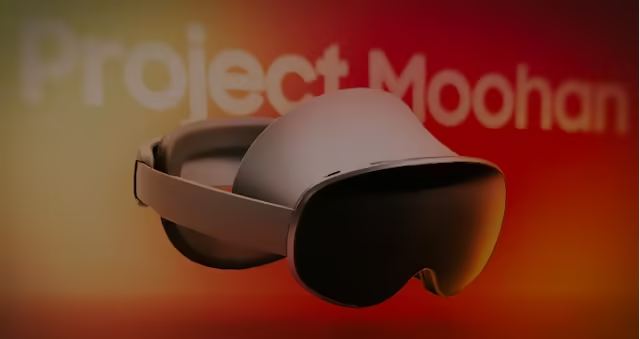Samsung Enters the VR Arena with Project Moohan
Samsung, the South Korean tech giant, is preparing to launch its highly anticipated Virtual Reality (VR) headset, Project Moohan, on October 21. This move comes amid a rapidly growing VR market, fueled by recent innovations from competitors like Apple’s Vision Pro and Meta’s Quest 3. The upcoming device, expected to be named the Samsung Galaxy XR, is poised to redefine immersive experiences with its state-of-the-art technology.
Unmatched Visual Performance with Dual 4K Micro-LED Displays
The Galaxy XR will feature dual 4K micro-LED displays, offering an astonishing 4,032 pixels per inch (PPI) and a combined total of over 29 million pixels—surpassing both Apple and Meta’s current offerings. This leap in resolution ensures unparalleled clarity and immersion, making it a formidable competitor in the high-end VR market.
Powerhouse Collaboration: Samsung, Google, and Qualcomm
Samsung has teamed up with Google and Qualcomm to develop Project Moohan, integrating Android OS, Google’s AI capabilities, and the Snapdragon XR2+ Gen 2 chip. This collaboration promises blazing-fast performance, seamless app accessibility, and AI-driven personalization features, setting a new benchmark for VR experiences.
Advanced Tracking and Extended Functionality
The Galaxy XR is equipped with multiple sensors and cameras for highly accurate hand-eye tracking, along with six external sensors for spatial awareness and a proximity sensor for safety. Running on Samsung’s One UI XR, the headset ensures smooth integration with Samsung’s ecosystem, enhancing user convenience.
Battery Life and Pricing
With a battery life of up to two hours for general use and 2.5 hours for video playback, the Galaxy XR is designed for immersive sessions without frequent recharging. Reports suggest a starting price of around $1,800, though Samsung has not officially confirmed this.
Aiming to Outshine Apple and Meta
With its superior display technology, powerful hardware, and AI-enhanced features, the Galaxy XR is positioned to challenge Apple’s Vision Pro and Meta’s Quest 3, potentially reshaping the future of VR.





